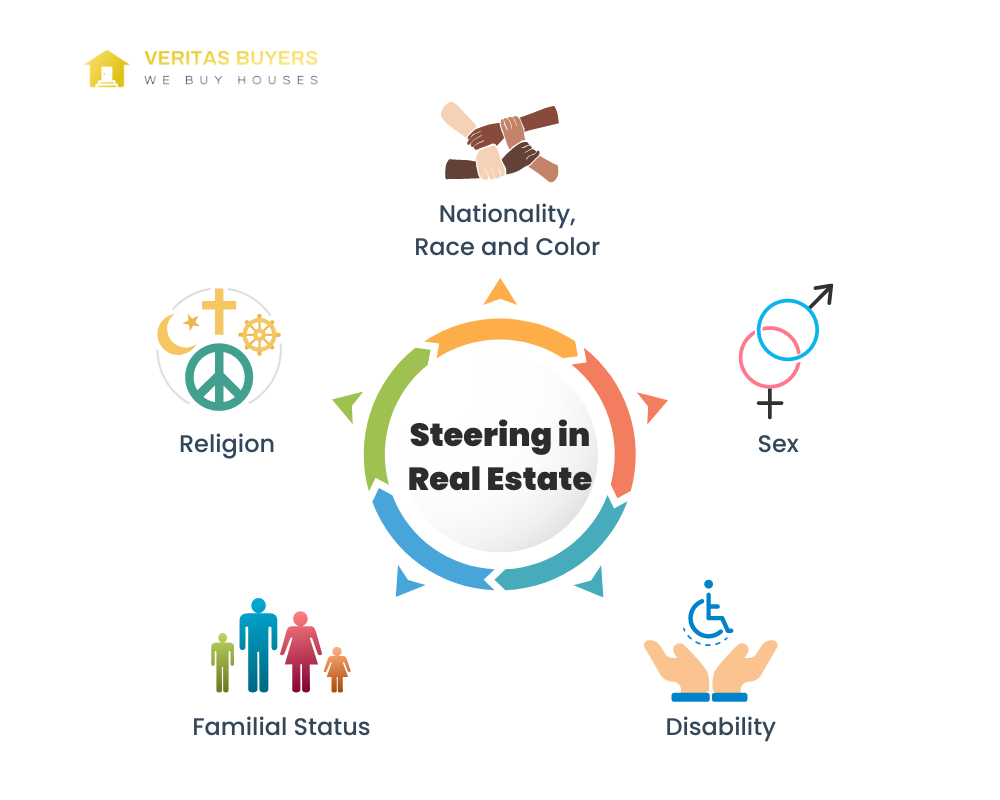Estoppel in real estate is almost always part of the closing process when a unit in your association is sold. Any fees or levies that the seller owes to your association are included in this certification document.
A letter of estoppel specifies that a certain amount of money is necessary in order to acquire a particular item. This information will be used by the title company and closing agent to compute closing adjustments and title insurance.
As a result of the estoppel letter, you will not be able to claim that a different amount is due to you as an organization.
Two goals are served by issuing an estoppel letter: to expedite the closing process and to guarantee that all assessments have been paid in full.
Due to Florida's requirement that buyers and sellers be equally accountable for dues and levies, this documentation allows for accurate proration of contributions between the buyer and seller.
According to Florida law, below is a complete list of everything you need to include in an estoppel letter. This may be different depending on your state, so kindly check on that.

If you are an organization and someone requests an estoppel letter or certificate, you have a legal responsibility to provide it within ten working days of receiving the request unless an exception applies.
Any member of the board of directors approved agent or authorized representative may submit this form on the organization's behalf.
Estoppel letters must be drafted correctly, which is crucial in the legal world. You should not rush back to the title company to return the estoppel certificate in order to prevent making a mistake. The great majority of sellers, on the other hand, have paid their neighborhood association dues and assessments in the vast majority of cases.
Delivery of the certificate might take place in person, by email, or via the regular postal system. If you get an estoppel letter online or via mail, you have 30 to 35 days to utilize it before it becomes void.
Charging for an Estoppel Letter
Since 2017, estoppel certificates issued by communal groups have been subject to these restrictions, which were previously unenforceable.
In addition to the $250 maximum fee, delinquent accounts may be subject to an additional penalty of up to $150 for each month they are late. In the event that you must produce the certificate fast due to a time constraint, charging an additional $100 is acceptable.
An Association Estoppel should include most of the following information.
When a landlord checks the terms and circumstances and current status of their lease, it is known as tenant estoppel.
This document is generally required during the due diligence process of purchase as well as during the underwriting of a commercial real estate loan in most commercial real estate leases.
What is the significance of this? A prospective investor or lender is interested in a property's cash flow, and the tenant estoppel shows that flow.
The term "estop" simply means to prohibit, and a certificate that prevents the tenant from adopting a position counter to what is mentioned in their certificate consequently is tenant estoppel.

While the specifics of a tenant estoppel letter or certificate might vary, the following things are often included in a standard tenant estoppel document:
If the lease has been changed, the estoppel certificate will contain a statement proving that the changes have been made.
Even while tenant estoppel letters and certificates are often required in most leases, there is some flexibility in the specific information contained in these documents.
As a starting point, the following is an excellent list.
It is common to encounter the tenant estoppel problem during due diligence and loan underwriting, and it is one that must be handled. It is used to get insight into the landlord-tenant interaction from the perspective of a third person who is not involved in the transaction.
In this article, we attempted to convey the fundamentals of tenant estoppel in a factual way.
Buying a home isn't just about making a phone call to the neighborhood organization and getting a verbal confirmation that you're interested in acquiring a unit. To verify if any unpaid dues are owed, you'll need the certified association information.
Closing expenses for a conventional closing often include the cost of this document, which is thus considered the responsibility of the seller in most cases.
This report, as well as the boundary survey and municipal lien search, will be collected by the settlement agent together with the other things required on the title commitment and closing contract.
Researching an HOA foreclosure auction for an investment property may be done online if you don't want to go through a formal closing and want to acquire this information yourself.

The legal description of a property provides information on the size and location of the property, which is useful in identifying the property in issue. It is possible to get the legal description of a property from the website of a property appraiser.
In contrast to a postal address, the legal description is specific to the property and cannot be found anywhere else. Therefore, the new owner's title will be clearly shown on the paper as a result of this change.
For platted subdivisions, lot and block numbers, as well as the name of the subdivision, maybe all that is required; however, for unplatted properties (empty lots), it can become more complicated by mentioning bodies of water and nearby highways, as well as other geographic landmarks, such as railroad tracks.
It is termed "metes and bounds" in this context, and it defines the procedures required in drawing the boundary lines of a piece of land using a starting point, an ending point, and an angle as reference points.
Once an association has been verified, here are some further questions to ask:
It is critical for title companies to have estoppel letters because if they are unable to verify any outstanding assessments, the new unit owner will be held liable. It is possible that the title insurance company may be sued. As a consequence, estoppel is guided by established legal principles.
If you violate even one of these standards, your organization may face legal consequences. You won't have to worry about remembering everything that goes into your certificate if you use a service like this.
If a real estate contract is terminated in some jurisdictions, you may be entitled to compensation. Learn if this is the case in your state by chatting with an experienced real estate professional.
If an organization or management firm in Florida receives an estoppel request, they are required to reply in accordance with certain criteria. The cost of the HOA estoppel letter may be claimed as a refund from the association.

If you want to make any requests or submit any payments in your region, be certain that you are aware of the limits in your area before proceeding. You run the danger of losing hundreds of dollars on information about a property that you do not really own if you do not have this protection.
What is the purpose of an estoppel letter?
When a lease already exists and is free of defaults, an estoppel certificate or letter shows that another party has benefited from the lease. It is signed by the party that signed the lease and is legally binding. According to the information in the file, the rent was paid on time and in full on a regular basis.
What does it imply when you talk about an "estoppel fee"?
The homeowners association charges a fee known as an estoppel fee in order for the title firm to validate your account status. Look into if you're current on your payments, whether you've dropped off the grid, or if the vendor has imposed any extra fees.
Steering in real estate refers to the act of directing or influencing the sale or purchase of property based on discriminatory factors.
While the real estate industry primarily serves as a platform for buying and selling property, the involvement of steering practices at the client and agent level can compromise the humanitarian attributes of the transaction from start to finish.
What is Steering?
The term "steering" pertains to guiding or exerting an impact on the buying or selling of property using factors that may involve discrimination. Steering into real estate can seriously affect equity by perpetuating systemic discrimination and limiting access to opportunities for specific groups.
Some of these characteristics include:

Here's an example situation of steering in real estate:
A real estate agent is showing a couple homes in a particular area of town. The couple is interested in a diverse range of neighborhoods and properties, but the agent consistently shows them homes only in predominantly white neighborhoods.
When the couple asks about homes in more diverse areas, the agent tells them that those neighborhoods are less safe or less desirable. The agent's behavior may be an example of steering, as they are limiting the couple's housing options based on their race or ethnicity.
These characteristics are winged under the Fair Housing laws, which prevents it from happening. These can manifest in various forms, such as showing certain properties exclusively to specific groups or limiting access to certain neighborhoods.
Steering occurs when buying houses and those looking to rent one. It may also occur at a community or building level when particular floors or access to parts of the building are restricted to specific people like those with families.
To promote equity in the real estate industry, addressing and eliminating steering practices is crucial.
Steering is a vice under the law as everyone deserves equal rights and opportunities without bias based on the characteristics listed under the Fair Housing act.
There are various measures to protect steering victims and prevent it from happening legally.
This act put up in 1968 is implemented in all states to regulate housing laws on specific characteristics listed above.
These are unique to an area, and most of the time, they may define other housing issues like landlord and tenant relationships and responsibilities. Some duties may include those in charge of snow removal or garbage disposal.
These local laws also reinforce or back up the Fair housing act giving more legal consequences of the actions.

Steering has a spiral effect on a neighborhood. This is a long-term effect that affects the social and economic life of the occupants.
Racial steering leads to blighted neighborhoods. A ripple effect affects the discriminated communities by reserving or referring specific groups to designated areas.
Home values depreciate, and living costs also become high. The business development of a place becomes hindered therefore impacting the economy of the residents.
A low economy means low income and a high cost of living. This impedes the place's social development, putting the neighborhood unproductive and dormant.
The local house market in an area is negatively affected when potential buyers are steered towards a different area. This leads to low demand for houses in the area.
When the homeowners in the segregated area try to sell their houses, they will have a lower price on them and might also sit on the market awaiting a buyer.
Flipping and fixing the homes also becomes useless since fewer people are willing to buy the property due to questions like why the value of the adjacent houses is low and the added steering away from the houses.
💡Key Insight: Flip and fix loans and other bank loans become hard to pay back since selling a house also requires money, putting the owner at a potential loss.

You might have second thoughts about your agent when a gut feeling kicks in. The uncomfortable situations that lead to termination of contracts and backing out of sales might be caused by oblivious steering.
You might not know that you are a victim until you're out of the deal and following up on reasons why. Here are a few ways you can identify steering in your transactions.
This occurs when advice or descriptions based on the neighborhood are used to sway someone to choose a specific one. The advice can be in terms of race or age groups.
Steering based on the development of a place may be in terms of available amenities but may broadly be on schools, hospitals, and religious places of worship. If an agent says schools in the neighborhood are not good or that hospitals aren't as good as those in their preferred places of interest, this may largely be discouraging someone from staying there.
They may also suggest unquestioned ideas such as special schools, elderly homes, or family-accommodating neighborhoods.
Crime rates in an area may be used to steer someone away from it. This is often associated with racial profiling or discrimination against race, even though there may be no security concerns.
There are certain things your won't talk about or will loop around the topic. They do this to avoid making you a victim of steering.
You might want to learn more about a place, but little or no information will be given. Some of the topics include:
Your agent will only give you a list of places of worship in the area or refer you to a public directory if asked. They won't answer questions that directly on the popular beliefs of most of the people living there or their religion.
The best way to know where you may join is by asking your local place of worship before moving if they have any places around your new area.
Your agent will not answer questions about the age groups of the people living in the neighborhood. Questions inquiring if the place has a youth or an older group living there or mostly young parents may be difficult even to the agents themselves.
You can easily get this information through the social media groups of the area's occupants to get a rough idea. Most places also have places of interest for people your age, and they may give a hint.
Some specific questions are just too in-depth, even for your agent. Questions about the most advisable or best school for juniors or seniors can't be answered, but public information about these schools may be collectively offered.
There should be no discriminatory comments like certain groups go to these schools given by the agent. It is helpful to source some of the information online but visiting the schools personally will most suit you.
When moving to a new neighborhood, it is customary to know how safe you are and which measures you should take to make sure you are. This, however, falls into a category in the Fair housing act that prevents the agent from commenting on it.
The resources you might be directed to are public records or social media groups of residents in the area. So, what can you do if you realize you are being steered into living in a particular place?

Since steering is a sensitive topic protected by the law, some procedures are put in place to guide you to a legal path of action.
If you had a contract like an exclusive contract with the agent, you might need to let the agent know that you want out of the deal. They often comply because their reputation is on the line as well as it is generally difficult to work with someone who is uncooperative.
You can change companies or request to have a different agent to continue with the task. There are many reputable firms where most agents have years of experience.
🧠Bear in Mind: The agent's experience or successive transactions may not mean that they are a perfect choice.
This should be the first step to take if you're a victim of steering and is the step that involves the law. If changing your agent doesn't work for you, filing a complaint against the agent and understanding the laws on this will help.
When filing your complaint, documentation of evidence is mandatory to your success, and the more evidence you have against the agent, the higher the success of the filed complaint. Multiple testimonies may be obtained through testing.
Testing is done by referring several clients to a suspected agent involved in steering. They all give accounts of their treatment and whether they were steered to specific areas based on their race, sex, familial status, and other factors protected under the housing laws.
Some consequences that may occur if they are found to be practicing steering include fines or loss of their licenses depending on the severity of the case and the local housing laws.
You cannot ask an agent about a particular category protected by the housing laws then claim the agent's information as steering information.
Some of these situations fall into the following categories:
Your agent may advise you to choose a particular area to get home because it is closer to amenities like grocery stores, medical centers, schools, and public services. Some of the tips may be
All these are in the condition that you, as the client, asked for the information from the agent. For example, which home is closer to a grocery store?
This can be advised in many ways depending on the client's questions. The agent should not give this information without the client's request, and if requested, they should provide a list of all the properties and let the client choose.
A building may have a wheelchair ramp and an elevator that will be convenient for someone using a wheelchair. Most of the time, this is even in the client's best interest, and they often inquire themselves.
A house may have spacious rooms and an outdoor area that would be convenient for a family compared to a squeezed apartment. This will save the client time and money looking for an expansion when the inconveniences later show.
A home may be far from the client's workplace, and a preference for a closer neighborhood would make it convenient.
📝Remember: An agent will not refer clients to these properties but give a list of properties where the client will choose one upon visiting and deeming them fit.
There may be implemented policies and restrictions in living somewhere like planned unit developments or home owner's associations in would be an inconvenience to the client.
If the client asks for the information, the agent may give them written rights and responsibilities for the condos or developments. The client will choose which is preferable for them.
✍️For Example: A building may have strict pet policies, and for a client with pets, it would be advisable to have one that allows pets.
Steering is the act of influencing, directing, or talking homebuyers or renters into acquiring property in specific areas based on discriminative characteristics.
As a real estate agent, there may be circumstances where you unknowingly steer a client to buying a particular house. However, there are some practices you may apply to help avoid this:
| ✔️Advise clients according to their needs and ask specific questions to help narrow in on their needs. |
| ✔️Pay attention to the unconscious terms you are using, like the descriptive words safe or nice. |
| ✔️Only add information on the client's request about the desired property. |
| ✔️Give a list of all the properties without leaving any out due to assumptions based on the client. |
| ✔️Direct a client to any public resources on questions about schools or other amenities. |
Remember, the Fair Housing act for realtors offers an open market with unbiased opinions while giving both clients and realtors the chance to have equal opportunities in the business.
Numerous developments are occurring daily in the real estate industry. One of the developments is a planned unit development, which you may have heard of or seen advertised or on a billboard.
PUD is an abbreviation for Planned Unit Development, but what exactly is PUD in real estate?
These are housing development units built in a gated or open community with an autonomous system in their own right. In many ways, it is more like a small town with a governing system that is the homeowner’s association.
Unlike traditional subdivisions, planned unit developments are not subject to variances or zoning regulations; instead, the location and construction of various projects are determined by investors with the assistance of the local government.
Some directives may include shared and private areas and local building codes and regulations.
A housing estate is a collection of houses and other structures that have been constructed as a single entity. Their appearance is consistent because they are mainly built by a single contractor and have similar or slightly different building designs.
A PUD, on the other hand, is a collection of different houses and amenities all located in the same area under the control of a homeowner’s association. There is an autonomous governing system that oversees operations within the community, and they are self-sufficient.
PUDs and the Law
Construction of commercial buildings in a residential zone is prohibited by zoning laws and building codes, which regulate the local restrictions on projects such as building height, proximity to the main road, and commercial buildings in a residential zone.
Planned unit developments are mostly made up of real estate. Typically, they won’t need a zoning variance because they are bought as a single piece of land or are made up of different homeowners who have come together to form a single community.
A court or government official may determine which laws are applicable and require a variance, as well as which rules are not applicable in their particular circumstance.
Home Owners Association

The home owner’s association (HOA) is the governing body of planned unit development, and it is in charge of overseeing operations. The homeowners who are part of the PUD contribute to this effort by paying a fee to the HOA.
Everyone who lives in the planned unit development is a home owner’s association member.
🤔Did you know: If a homeowner living under a Home Owner’s Association agreement does not adhere to a specific rule, they can be sued? Read our article on real-life crazy stories where homeowners get sued!
They may come fully furnished with pre-built houses of various sizes, including condos, townhouses, single-family homes, and even senior living facilities.
They may also include amenities such as
PUDs can affect both commercial and residential properties. If you are a tenant, you may be notified that the property you have signed a lease for is part of a PUD.
It is also possible to find land in a PUD being sold off to home buyers who wish to construct their own homes within the boundaries of the PUD. They will continue to pay the necessary HOA fees and be considered community members.
A PUD may also be advertised to the public by a real estate company before it is built, allowing the public to purchase homes before they are built. The price of the house includes the plot of land on which it is to be constructed.
The distinction between the two can be challenging to make because a homeowner’s association oversees a planned unit development.
The primary distinction between the two is that a PUD is a piece of real estate, whereas an HOA is a governing body where residents pay annual dues.
They also differ in who owns the land on which they live.
A home owner’s association community is typically a condominium complex overseen by a board of governors that is made up of volunteers or appointed by the community’s owners to oversee the operations of the complex.
Although the association owns the land, some guidelines govern how occupants use their space. These guidelines may be somewhat restrictive in parking, visitor policy, and paint color, among others.
On the other hand, in planned unit development, the homeowner owns the land and can use it however they see fit. The HOA that manages the development may have rules in place intended to keep the property values of the homes in the PUD stable by establishing rules that are similar to those that apply in a condominium setting.
A PUD tends to be more expensive due to the freedom residents enjoy and the amenities available to them, which are mostly only accessible by residents. Therefore, residents must pay regular PUD fees to the HOA to continue to benefit from these amenities.
Garbage collection and disposal, security, sewage, and water treatment, as well as backup electricity and landscaping, are some of the services that both companies may provide.
💡Insight: All of these fees are paid on a monthly, quarterly, or yearly basis, depending on the terms of the agreement.
Future development costs, such as those associated with planned development, renovation, or extension of a specific building or area, may be included in the fees.
As a home buyer, you’ll need to know how planned unit developments work before you can proceed with the rest of the purchasing process.
It specifies whether the property you wish to purchase is part of a PUD and any rules or fees that must be adhered to before the transaction.
The HOA governs a planned unit development and also, in itself, has regulatory measures put in place for the occupants.
Anyone involved in the planned unit development must adhere to these rules to maintain the development’s value and reputation.
Additionally, they outline your rights as a homeowner within the development and the procedures to be followed if those rights are violated.

Fees must be paid to the HOA to take advantage of the private amenities and services provided to the occupants, such as recreation and landscaping.
🎓Experts Tip: The amount of money you owe as a homeowner and the frequency of making payments are detailed in the appraisal documents.
The appraisal also includes information on mandatory fees such as security deposits and optional fees such as service fees. You will need to be aware of these before agreeing to live in a planned unit development.
🧠Remember: Any unclear information should be discussed with the appraiser to obtain additional information.
First and foremost, to make an informed decision about whether or not to live in or purchase property within a planned unit development, PUD, you must be aware of the implications of doing so on both a negative and positive level.
There are various reasons for choosing a planned unit development over a condominium or a single-family residence, but there are also downsides to living in a planned unit development.
Take a look at the table below for a quick summary:
| Advantages✅ | Disadvantages❌ |
| You get access to various private amenities that make a living in the area more convenient. | You have a legal obligation to follow the rules. Even though you own the land, you’ll still need permission to do anything with it if you want to make it productive. |
| You are not responsible for the preservation of the common area. | Because you may not wish to take advantage of any of the amenities, PUDs can become prohibitively expensive to live in. |
| The homeowner’s association provides a variety of security services. | Compared to a typical neighborhood, the homes are much closer. |
| You are the legal owner of both the land and the property. | |
| You will be able to take advantage of snow removal and landscaping services. |
The planning process for the development consumes a significant amount of time and resources. There are a lot of secondary costs, such as paying for the land even though it will not generate revenue for an extended period.
Marketing a PUD typically necessitates hiring specialists who are well-versed in the field, and these specialists are often prohibitively expensive.
Most of the time, planned development units are intended to revitalize a dying town by bringing in amenities and other necessities. However, the project does not provide enough to make it financially viable.
Planned unit developments do not eliminate the need to commute from one location to another because it is technically a town where vehicles are required for most transportation needs.
Working with a mortgage lender to finance your home may seem like an unending process, especially with all the documentation required.
🤗Friendly Tip: If you find yourself facing financial hardship and unable to pay your mortgage, you should immediately speak with your lender to prevent foreclosure. Also, there are ways to get of your mortgage, like refinancing your home.
What is the most reliable way to determine whether a home you want is a part of a PUD?
If the property is part of planned unit development, the homeowner’s association fees are usually included in the documents provided by the realtor who sold you the home.
As a member of a PUD, your realtor may also inform you that the house you want is subject to a PUD and provide you with the contract outlining your obligations and rights as a member of that PUD.
🔥Hot Tip: If you want to sell your house yourself and don’t want to deal without a realtor, check out our simple guide, which explains how to get the ball rolling!
The mortgage lender collects these documents to review and approve the loan application. In conjunction with the standard loans provided, several checks must be completed.
The lender needs to be aware of the financial impact of the PUD and HOA policies on the budget before approving the loan.
Some examples of cross-checks are as follows: